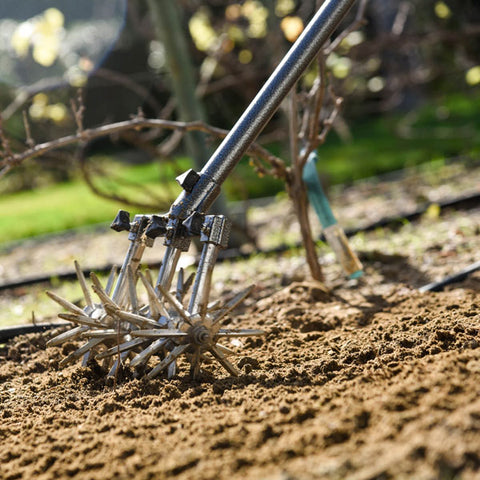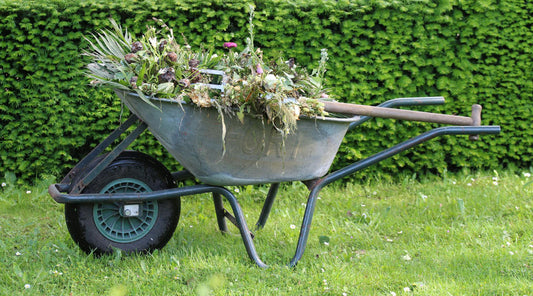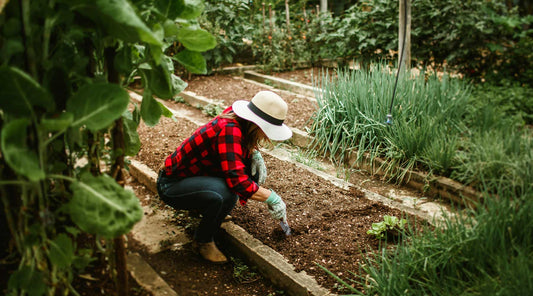Spring Gardening Tips: Your Ultimate Guide to a Blooming Garden
Spring is nature's way of saying, "Let's party!" It's that magical time when the world comes back to life, and our gardens burst with color and fragrance. As we bid farewell to the chilly winter days, it's time to roll up our sleeves, grab our gardening tools, and embrace the joys of spring gardening. Whether you're a seasoned gardener or just starting out, these top 11 spring gardening tips will help you cultivate a vibrant and thriving garden oasis right in your backyard.
-
Prepare Your Garden Beds

Before you can sow the seeds of your spring dreams, it's essential to prepare your garden beds. Start by clearing away any debris leftover from winter and loosening the soil to allow for proper drainage and root growth. Adding compost or organic matter can help nourish the soil, ensuring your plants have the nutrients they need to flourish. The Raised Bed Cultivator Set isn't just for raised beds and with a twist tiller and rotary cultivator you can make quick work of turning soil and adding amendments so your garden flourishes this spring.
-
Choose the Right Plants for Spring
Not all plants thrive in the same conditions, so it's crucial to choose varieties that are well-suited for spring planting in your region. From colorful flowers to crisp vegetables and aromatic herbs, select plants that will thrive in the warmer temperatures and longer daylight hours of the spring season.
-
Timing Is Key: Start Early
Spring is a busy time for gardeners, so don't procrastinate! Take advantage of the early spring window to get a head start on your planting. Many cool-season crops, such as lettuce, spinach, and peas, can be planted as soon as the soil is workable, giving you a jumpstart on the growing season.
-
Don’t Neglect Watering Needs

As the days grow warmer, it's important to keep your garden well-hydrated. Water deeply and consistently, aiming to moisten the soil to the depth of the plant's roots. Early morning is the best time to water, as it allows the plants to absorb moisture before the heat of the day sets in. This is a great time to check your hoses for wear and tear and maybe buy a new garden hose reel cart for your yard.
-
Combat Weeds and Pests
Nothing puts a damper on a garden party quite like weeds and pests. Stay ahead of the game by regularly inspecting your garden for unwanted intruders and taking proactive measures to keep them at bay. Mulching can help suppress weeds, while natural predators and organic pest control methods can help deter common garden pests. Up your weed management with the Rocket Weeder or Terra Weeder and put pests in their place with the Gopher Bait Applicator for a more beautiful garden this year.
-
Embrace Mulching
Mulch isn't just for aesthetics – it's also a valuable tool for maintaining soil moisture, regulating temperature, and suppressing weeds. Whether you opt for organic materials like straw and compost or inorganic options like plastic or rubber mulch, adding a layer of mulch to your garden beds can help your plants thrive. See our guide to fall composting for more on mulching.
-
Pruning and Deadheading
Regular pruning and deadheading are essential tasks for maintaining healthy, vibrant plants. Remove dead or diseased branches, as well as spent flowers, to encourage new growth and prolong the blooming season. With a little bit of pruning TLC, your garden will be the envy of the neighborhood.
-
Feeding Your Garden: Fertilizing Tips
Just like us, plants need food to grow big and strong. Give your garden a boost by fertilizing with organic or slow-release fertilizers, following package instructions for application rates and timing. Be sure not to over-fertilize, as this can do more harm than good.
-
Stay Vigilant: Monitor and Adjust
A successful garden requires constant attention and adjustment. Keep a close eye on your plants for signs of stress, disease, or nutrient deficiencies, and make any necessary adjustments to your care routine accordingly. Remember, a little extra TLC goes a long way in the garden.
-
Invite Pollinators to Your Garden
Pollinators like bees, butterflies, and hummingbirds play a crucial role in the garden ecosystem, helping to fertilize flowers and ensure bountiful harvests. Encourage these beneficial insects to visit your garden by planting a variety of nectar-rich flowers and providing shelter and habitat.
-
Create a Garden Journal
Documenting your gardening journey in a journal can be both fun and informative. Keep track of planting dates, varieties planted, weather conditions, and any observations or insights you have along the way. Not only will it help you learn and improve as a gardener, but it will also serve as a cherished keepsake for years to come.
Conclusion
With these top 11 spring gardening tips in your arsenal, you'll be well on your way to creating a blooming garden paradise that's the envy of the neighborhood. So grab your gardening gloves and get ready to dig in – spring gardening season is here, and the possibilities are endless!







